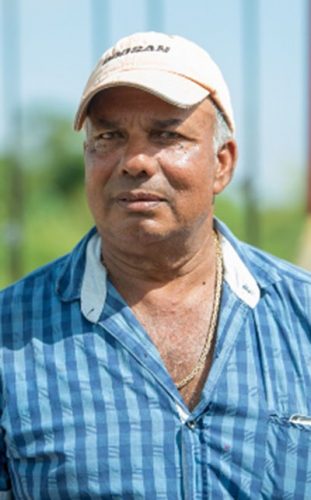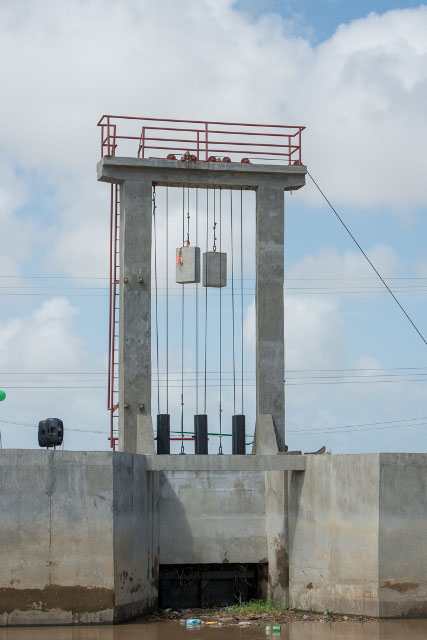An $89.6M sluice and revetment project at Thierens on the Essequibo Island of Leguan was commissioned yesterday, the Department of Public Information (DPI) reported.
Chairman of the Leguan Neighbourhood Democratic Council, Latchman Dwarka related that over 50 farmers will benefit and some 1000 acres of lands protected.
Speaking at the commissioning, Minister of Agriculture Noel Holder said the government has been concentrating on water resource management since almost all agriculture is practised in the low-lying areas of Regions 2,3,4,5 and 6.

“This sluice can adequately drain an area of 750 acres. It takes into consideration your current situation and any future developments in the village of Thierens. This will considerably increase the benefits attained by improving crop production since shorter, and less frequent, inundation periods can be expected,” Holder noted.
Holder added that his ministry, through the National Drainage and Irri-gation Authority (NDIA) has

expended approximately $8 Billion in 2019 to continue the implementation of plans for the upgrading and rehabilitation of the D&I infrastructure in all regions across Guyana.
Chief Executive Officer (CEO) of NDIA, Frederick Flatts said that as the NDIA continues to increase the drainage coefficient across the nation, 12 pumps – 9 fixed and 3 mobile ones are expected to arrive in less than two months from India.
Leguan farmer Roopchand Maraj said that “this project was neglected for years and we were faced with major flooding. So, this is a great gift.” Another farmer for over two decades, Jagdesh Ramratan added “we are happy for this. It will help us greatly.”
In recent days Leguan has been hit by a series of D&I problems. A koker was left open leading to flooding and on another occasion several kokers were opened to provide irrigation for farmers but not without flooding some residents.






